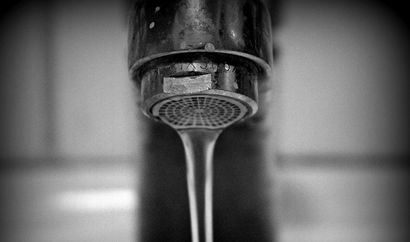
Septic Drain Fields 101: What You Need to Know
By | July 26, 2021
If you own a home with a septic system, there’s a good chance you probably know that you can’t treat it exactly the same way you would treat a standard sewer line. Septic systems require a bit of additional care, as they need to be able to not just transport waste away from your home, but contain and process it as well. In order to do this, they have several different key components and systems that all have an important function in the septic handling process. It’s important as a homeowner to know what these various components are and to understand what they do. That way you can tell when something is wrong and can make the proper efforts to avoid issues in the first place.
What Is a Drain Field?
Your septic system is comprised of four primary parts: a septic tank, a distribution box, and a drain field, also known as a leach field. Your septic tank is where waste is separated from water and stored until it can be pumped out. However, the separated water needs somewhere to go as well. Water eventually flows out of your septic tank and out to a distribution box, which in turn sends it evenly through one of several branches of pipe that compose your drain field.
Your drain field is a set of long, perforated pipes that have the duty of taking processed water from your septic system and releasing it back into the ground. Does this release septic waste into the ground as well? Actually, no. By design, septic systems separate water from the waste they process, naturally cleaning it. While this water isn’t considered potable or drinkable, it’s actually great for landscaping purposes like watering your lawn.
What Can Go Wrong with Your Drain Field?
Your drain field might seem like a pretty simple and straightforward part of your septic system, even though it is also one of the largest. However, things can go wrong with this critical part of your septic system, and these problems can cause issues for your entire system, and thus your home as a whole.
Here are just a few of the common issues drain fields have to deal with:
- Clogging: Clogging happens when contaminants that can form clogs are introduced into your septic system. This includes things like fatty cooking oils, grease, and other forms of sticky substances that can coagulate or solidify into a sticky clog that interrupts water flow. Your drain field depends on a constant, uninterrupted water flow into the surrounding soil, and a clog could prevent this, causing backup in your tank and eventually back into your entire home.
- Bacteriacide: As with other parts of your septic system, it is absolutely crucial that you have a healthy amount of biological activity within your drain field to maintain functionality. This biological activity is carried out by bacteria—helpful microorganisms that process a lot of the waste out of the water that flows through your septic system, making it safe to put back into the earth (and the groundwater table). Bacteria-killing substances, such as antibacterial hand soap, kill off these helpful microorganisms, killing the waste-processing power of your septic system. This is why you have to buy “septic safe” versions of normal home products, including detergents, hand soaps, pest control chemicals, and so much more. With your drain field, however, you also need to be careful what insecticides and fertilizers you are putting down on that area of land. Many of these products have bacteria killers to protect against lawn disease, and these bacteria killers can damage you drain field.
- Component damage: Your drain field lines are not buried far underground—often no more than just a few inches. The dirt that is placed over these pipes is rather thin, and doesn’t provide a lot of protection for the pipe below it (contrary to your sewer line or many other buried plumbing lines). Thus, any excessive amount of weight on the soil above your drain line might physically damage the pipe itself. Driving over drain field pipes with a car or even a larger lawnmower can cause major damage to drain lines, so always be sure to keep the heavy machinery away.
This brings up another important point: drain field repairs are expensive. While we do everything we can as septic system experts to keep your drain field and septic system services as affordable as possible, there are some factors we can’t ignore. First, rain field repairs are generally highly labor-intensive. Just about any service involves digging up a buried drain field line, and that takes a lot of time and effort (not to mention having to replace the soil after and regrow your grass).
To add to the problem, many drain field repairs require a major replacement of at least one component. Because of the way drain fields are designed, it isn’t uncommon to have to replace at least one entire branch of your drain field in the event something goes wrong. Whether it’s a cracked line or a giant clog, there’s a strong chance you’ll need a major replacement, and that means more digging and a more expensive process. Therefore, while it isn’t always the case, it typically isn’t unusual to see drain repair services reach prices that venture into the thousands of dollars. However, by being proactive and taking care of your septic system, you can avoid these problems and enjoy a safer and more sanitary home.
If your drain field needs a repair service or your septic system has encountered a problem, call The Plumbing Experts at (864) 210-3127 and request an inspection today. Let us be the one to take care of the issue and get your home working normally again.








